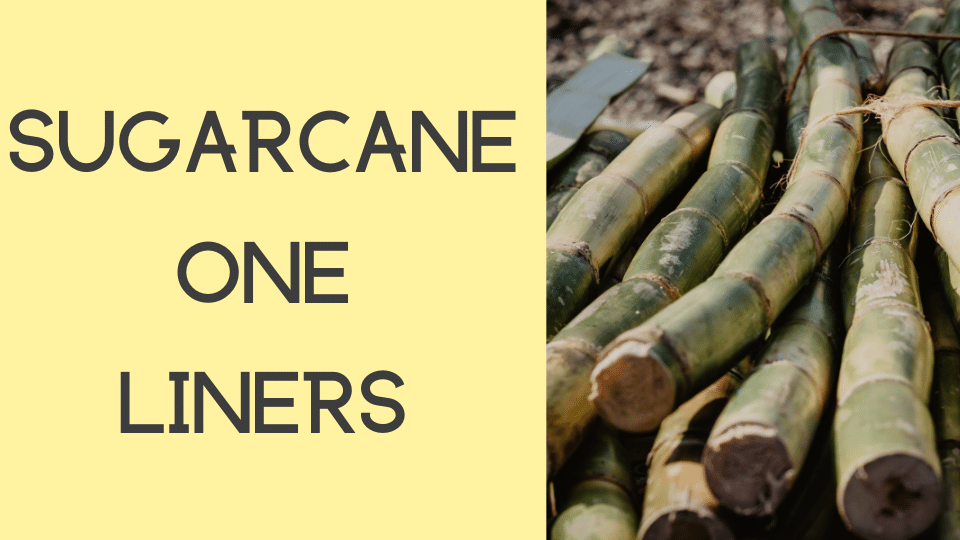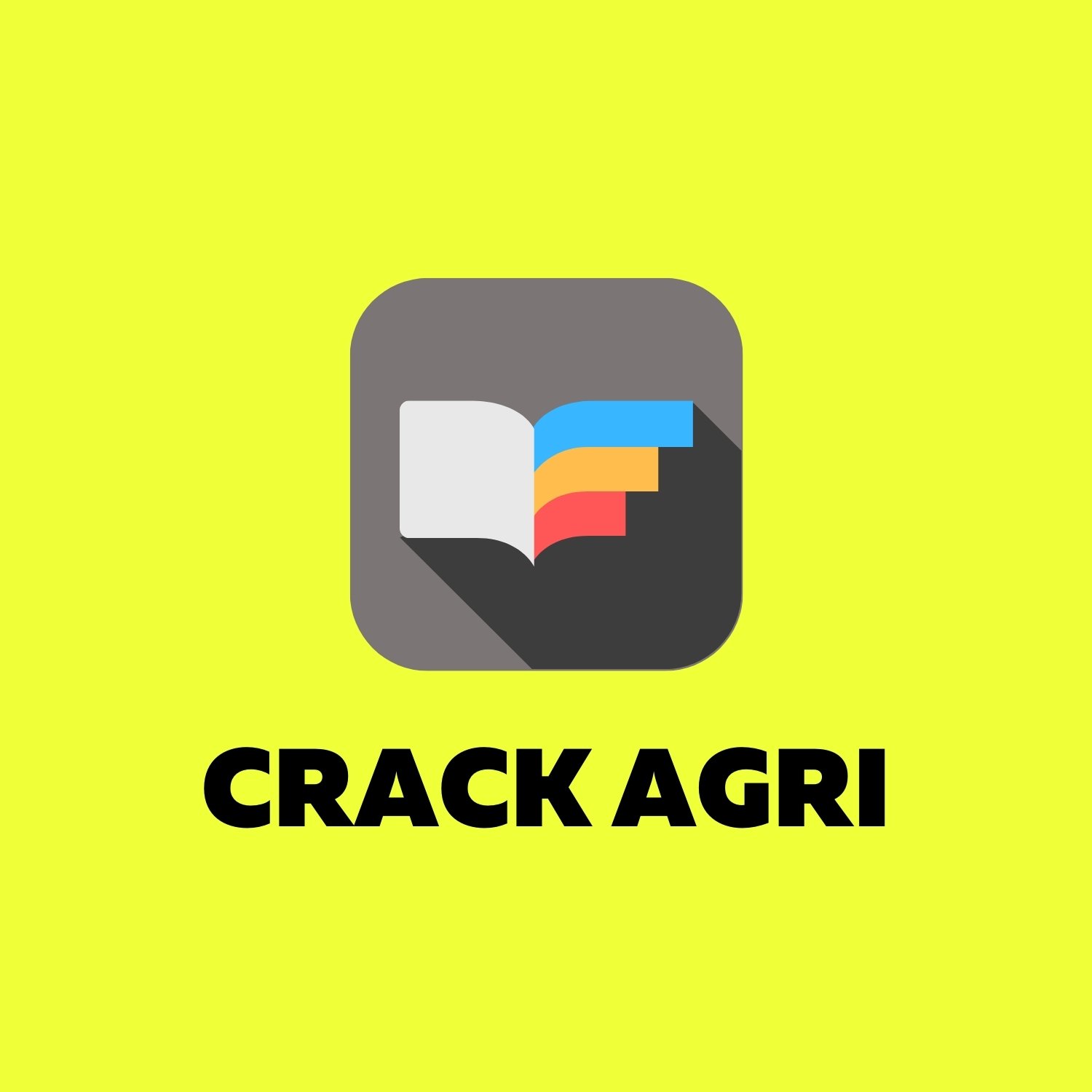- August 6, 2021
- Team CrackAgri
- 0

Sugarcane One Liners
Q. Botanical name of Sugarcane
Ans. Sccharum officinarum (tropical cane) Sccharum barberi (Indian cane)
Q. Inflorescence of sugarcane is called as.
Ans. Arrow or open panicle
Q. Arrowing (Flowering of sugarcane plant) stage arrives on.
Ans. 300-350 days after planting
Q. Sugar mills are highest in India with highest sugar production
Ans. Uttar Pradesh (105 mills)
Q. In sugarcane upper 1/3 part is used for sowing due to.
Ans. High nitrogenous substance & glucose for better germination
Q. Highest producer of sugar from unit area is
Ans. Maharashtra
Q. Which country is World leader in Sugarcane production-
Ans. Brazil & 2nd India
Q. Higher dose of nitrogen decrease the
Ans. Sucrose content
Q. Most critical stage for irrigation is
Ans. Formative stage
Q. Germination phase comes after
Ans. 0-60 DAP
Q. Maturity phase comes after
Ans. 250-365 DAP
Q. Formative stage comes after
Ans. 60-130 days after planting
Q. Most popular planting method in north India.
Ans. Flat bed planting
Q. Brix reading should be for proper maturity
Ans. 16-18%
Q. Jaggery extracted from juice is
Ans. 9-10%
Q. Sucrose content in cane.
Ans. 13-14%
Q. Sugar from juice is
Ans. 6-10%
Q. Soils which are unsuitable for sugarcane are
Ans. Saline soils
Q. Noble cane is
Ans. S. officinarium
Q. Adsali sugarcane is planted in
Ans. June-July
Q. Duration takes adsali sugarcane
Ans. 18 months
Q. Brix meter is used for
Ans. Measuring maturity of sugarcane
Q. Seed rate for 3 budded sets
Ans. 25000-30,000 sets
Q. Seed rate for 2 budded sets
Ans. 45,000-50,000 sets
Q. Seed rate for single budded sets
Ans. 1,25000 sets
Q. Origin of sugarcane
Ans. India
Q. Sets roots are
Ans. Temporary roots
Q. Temperature required for grand phase in sugarcane.
Ans. 70 °F
Q. Earthing should be done in the month of
Ans. June-July
Q. Tying should be done in the month of
Ans. August and Sept. when plant of about 5 feet height. Tying is done to prevent lodging economize water use efficiency, control weeds and draining excess water.
Q. Sowing time of Eksali crop
Ans. Jan.-Feb. (South India)
Q. Wonder cane is
Ans. COC-671 (High sugar%)
Q. Sugarcane ripener chemical.
Ans. Glyphosate
Q. Detrashing and Popping in Sugarcane
Ans. Detrashing refers to removal of unwanted bottom dry and green leaves at regular intervals. Popping: The operation of tying the leaves together using dry, green leaves. Popping can be either done for each row two rows can be brought together and tied. It is done to check lodging of cane. Lodging reduces sucrose accumulation of sugarcane in wet and dry tropics.
Q. Hot water treatment of Sugarcane setts is done
Ans. To control seed borne diseases
Q. Spacing of row to row
Ans. 90cm.
Q. Name of wild type cane.
Ans. S. spontaneum
Q. Family of sugarcane.
Ans. Gramineae
Q. Align planting method of sugarcane developed by
Ans. Allahabad Agriculture Institute
Q. Burning of canes is done to
Ans. lmprove sucrose & juice quality
Q. Indian cane indigenous to North and Eastern India
Ans. Saccharum barberi
Q. Major disease of sugarcane is
Ans. Red rot
Q. Noble cane was developed by
Ans. T.S. Vankataraman
Q. Type of sugarcane plant is
Ans. C4, Intermediate short day plant
Q. Which S. cane species having very low sugar and high fiber content
Ans. S. Spontaneum
Q. Material used for S. cane sowing is known as
Ans. Sets
Q. Element necessary for sugar translocation
Ans. Pottassium (K)
Q. Most common irrigation method used in S. cane is
Ans. Furrow method to reduce lodging
Q. Ratooning is related to
Ans. Sugarcane
Q. For brix reading juice should be taken from which part of cane
Ans. Middle part
Q. Fehling test is done for
Ans. Maturation of cane
Q. In Fehling test the reading should be less then
Ans. 0.5% glucose
Q. Who developed the term crop logging in sugarcane
Ans. H. F. Clements (1960)
Q. By products of cane
Ans. Bagasses (for fuel & paper), Molasses (for Alcohol), Press mud
Q. Press mud is used for
Ans. Reclamation of acidic soils
Q. Energy product which is produced by cane is
Ans. Gasohol
Q. At present total Sugar mills in India
Ans. 732 Mills (As on 31 July 2017)
Q. Variety developed by Sugarcane Breeding Institute Regional Centre, Karnal.
Ans. Karnal-6 (C00239)
